Why Winners Win
Why Winners Win
Transition is never easy in business and key strategic changes are looking even tougher this year. The COVID-19 disruptions have compelled retailers to confront decisions about innovation at a more rapid pace than they may have contemplated before the virus.
Economic uncertainty makes the stakes feel higher, even as food and mass retailers are experiencing exceptional sales growth and shoppers embrace eCommerce ordering at a pace that no one could have predicted a year ago.
The COVID experience tells us that market leaders will need to respond with greater audacity, and keep accelerating progress in business processes and technology, says Todd P. Michaud, President and Chief Customer Officer of Hypersonix in a recent conversation. The alternative is to be left behind while competitors adopt innovations and technologies to make themselves more responsive to fast-changing market conditions and gain share.
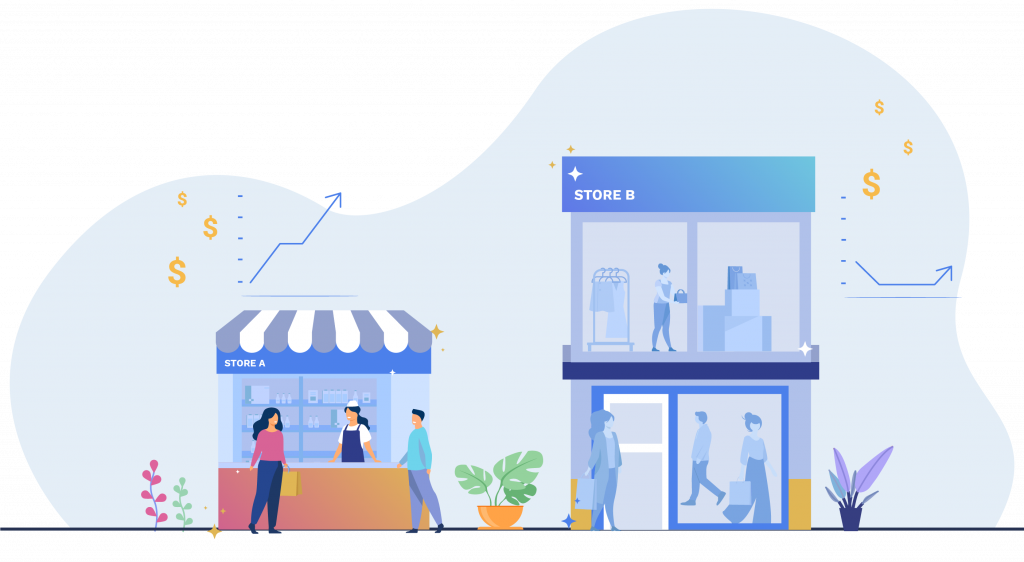
“Among the traits that ensure survival or set the winners apart, is the willingness to make big, bold decisions no matter the obstacles,” said Michaud, who maintains that strategic technology investment is a foundational step that retailers need to embrace swiftly.
“You cannot use previous-generation technology or processes and still set yourself up for the future,” he maintains.
Michaud has worked with which numerous retailers over his career as they wrestled with the choice to adopt game-changing technology platforms. He has witnessed how strenuous that can be and also how boldness can pay off handsomely for those willing to confront the challenge.
His point of view is clear about why winners win. It begins with the courage to break with the past and adopt new methods that ensure profitable survival. For more of his insights, read on.
Q. How do you define a “winner” in today’s retail competition?
Todd Michaud: Retail winners share a number of traits that set them apart from the pack. Number one right now is a willingness to make big, bold decisions despite the obstacles and challenges before them.
Winners know that they’re going to be in business six months from now, a year from now, five years from now and that things will be bigger and better. They know they are going to experience increases in volume and busy times as recovery happens. So, they are not going to wait for the future to make those decisions when inevitably, they won’t have as much time to focus on it. They’re going to make something happen now.
Q. How do they accomplish that?
Michaud: Winners embrace new ways of doing things. They possess the impatience to be data-driven, the vision to depend upon AI insights to make decisions going forward.
One underlying trait, I think, is cultural. Winners expect everybody to play from the same set of facts.
Every organization that’s been around for a while has got data silos and barriers between the departments. You end up with the enterprise operating sub-optimally because insights that marketing has aren’t shared with merchandising or aren’t shared with store operations. Tearing down those walls between the departments – that may be metaphorical walls, data walls, or people walls – is where they need to go.
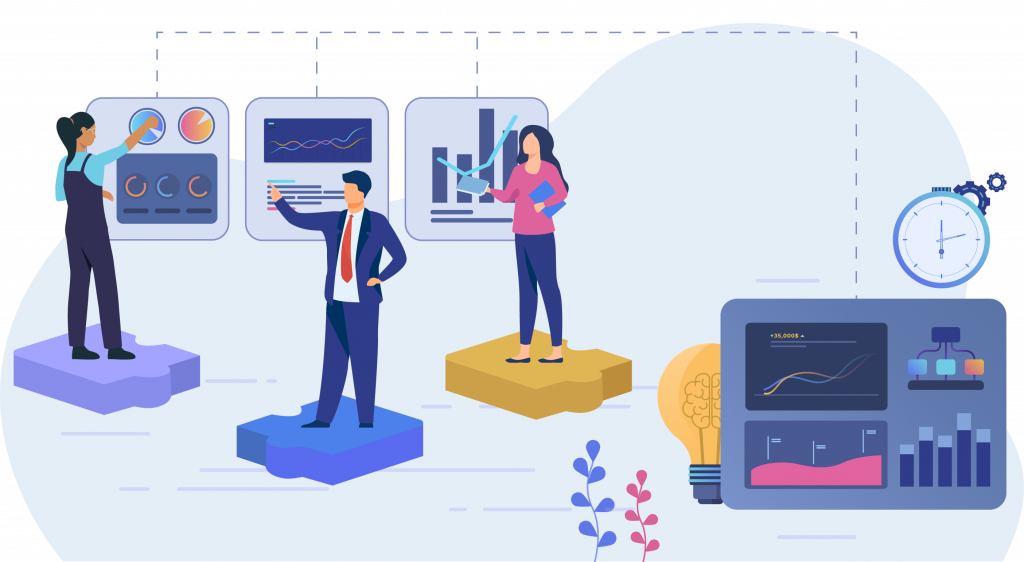
Ultimately, the future-ready enterprise is going to have a broad-based, enterprise-wide, and maybe even ecosystem-wide systems of insights that they use for making both strategic and tactical decisions. In today’s environment, that means Artificial Intelligence.
Q. So winners need to embrace tech innovation in particular?
Michaud: In this sense, yes. You cannot use previous-generation technology or dated processes to set yourself up for the future. That means you’ve got to be willing to sacrifice the past – whether it be technology or process – to transform in the future.
I often meet retailers who seem afraid to make a decision to go from, let’s say, an older demand forecasting tool to a new demand forecasting tool. They think, “We’ve already got a system that we have used for many years. And man, that sure was agony to put in. I really don’t want to go through that torture again.”
Putting in new technology is always difficult. But what if we know that the technology now in place isn’t set up for the very thing that you need it to do? For example, do you have demand forecasting tools that are store-centric, not digitally enabled? How is that going to set you up for understanding digital demand, its challenges, and opportunities?
You’ve got pricing systems, promotion systems, assortment systems, inventory systems that are all built for that old paradigm that centered around the store. Winners understand that any of these capabilities, whether it’s the application functionality like merchandising or something more behind-the-scenes like forecasting, have got to be built for the businesses that they expect to have rather than the businesses they have historically had.
Q. Isn’t there a risk of a kind of tech group think that can influence that choice? Or put another way, when firms pin their future on a new AI platform, how will they know they made the right decision?
Michaud: Really the best attribute of a winner is not going to be someone that puts all of their faith in AI analytics. It’s going to be someone that understands that human ingenuity, human intuition, human judgment, coupled with AI data-driven decision gets you much, much better results than just relying on one or the other.
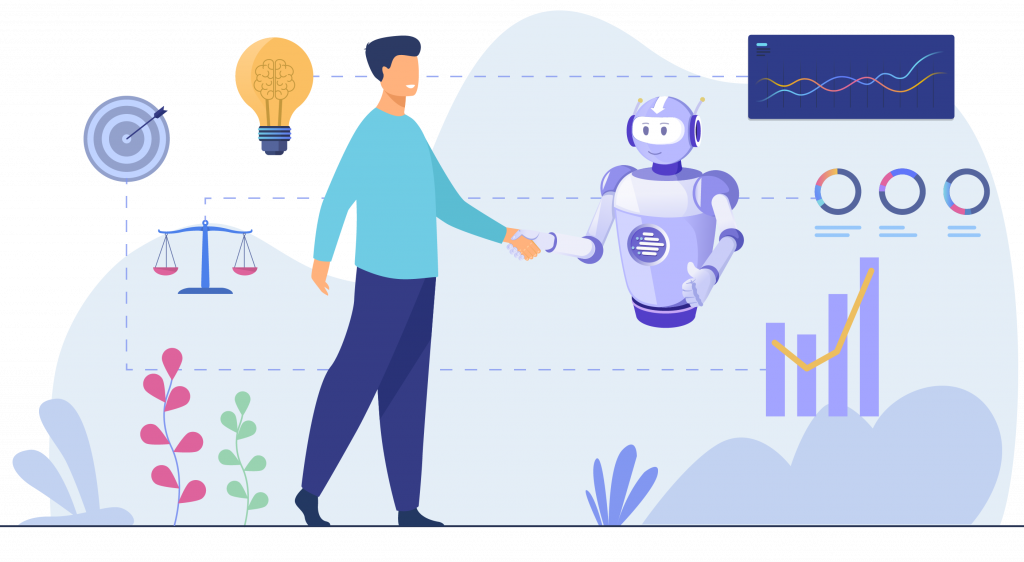
It’s one plus one equals five if you do this right. Human thinking plus AI equals a better outcome and understanding of where to use our history and where to use data science. The balance should be determined based on the capabilities of the technology and the team.
Humans retain their essential role, of course. Artificial Intelligence automates certain things that humans used to do with great effort. It may be dense calculations comparing alternatives. It may mean training an AI to improve decisions that humans used to have to make on their own by evaluating many more combinations or considerations before reaching a conclusion. That does not take the place of human ingenuity or instinct – it enhances it.
Q. So winners are able to visualize the advantages of automating and sharpening decision processes that have been very time–consuming or costly to do using conventional methods?
Michaud: Totally agree. Let’s say that our AI is figuring out prices for next week, for example. It may be channel specific. Then factor in seasonality, availability of inventory, promotions that may be ongoing. When it’s doing price determination, it’s modeling how shoppers are going to react. Are they sensitive on that product, or are they insensitive? If we price the product in a certain way, what’s going to happen with that item? Then, what’s going to happen with the other items influenced by that item? It covers too many factors for a human being to consider on their own.
How does that get translated into a practical outcome? Every week, a retailer may take – let’s pick a theoretical number of a thousand price changes. If your pricing analyst, the category manager, or merchant, has to go through a thousand price changes, and the rationale for each. That’s a lot to do.
What if you could change the paradigm and say “I value you as an expert, so instead of having you review a thousand business-as-usual price changes, we’d like you to review only two hundred of the thousand?” The 800 that we’re not going to have them review the AI will process automatically. It’s going to perform prescriptive, predictive analytics and generate those decisions automatically. The AI is also going to provide recommendations on what you should do for the 200 we’re asking them to look at. We are injecting human judgment and governance into the process.
Q. So the AI takes a big chunk of the routine decision burden away?
Michaud: That’s right. Your merchandising expert would not have been able to spend the time really strategically thinking about the question of whether or not each price was set at the right strategy if they were doing a thousand price reviews in that given week. But if we free up 80 percent of their price review time, they can look harder at the needle-movers where their knowledge and judgment can augment what the system has recommended.
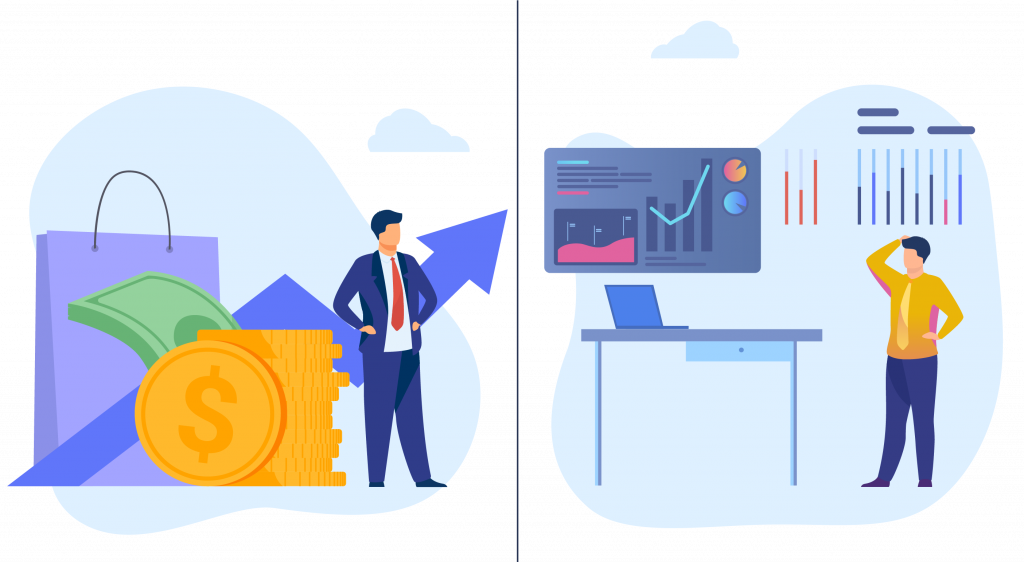
That simple equation of freeing up 80 percent of your time so you can spend more time being strategic – that’s a beautiful thing. That’s where you start giving your performance a boost.
This little example can apply to virtually every dimension of your business where daily decisions are made. That could mean evaluating new item cut-ins into your assortment, delisting of items, tuning your supply chain. There are many more opportunities to free up time that people now devote to grinding through mundane stuff.
Q. Time savings are a great thing, but are winners ready to trust AI systems to handle the bulk of dull–but–routine merchandising and operational decisions?
Michaud: In some cases they don’t want to change. Maybe they don’t want their job minimized or mitigated by technology. So there can be a control factor. While they really don’t enjoy doing those mundane tasks, it’s another thing to get past the skepticism or the fear that that technology is infringing on something that they’ve done for the last 20 years and that they are good at.
All of a sudden, we’ve got some new way of doing something. So they ask, “You mean to tell me that system that you’re going to install in 30 days is going to be better than what I’ve learned over my past two decades in this role?”
Q. There’s that courage factor again. We associate people who win with the ability to recognize opportunity, control their fears, rapidly adapt, and move ahead. Is there something different about an organization that wins?
Michaud: A great enterprise, a winning enterprise, knows not to second-guess analytics for the sake of doing it. In some cases, when I override the analytics with my human judgment, I perpetuate bad or less-than-optimal results. So picking your battles, focusing on the right things, I think is really a nuanced matter.
But we’re not advocates for all or nothing. We don’t insist everything has to be automated with AI. We are advocates for taking that routine, time-consuming decision activity off your plate and free your time up to be more impactful in your job, to your colleagues, to your company, etc.
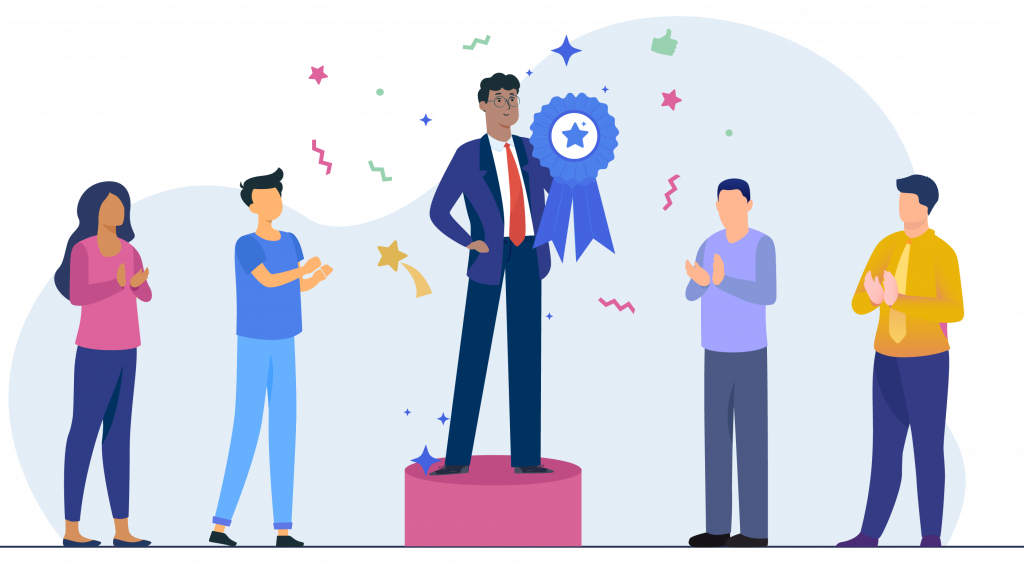
And that definitely does not mean that we expect all these decision-makers to be technologists. They should not be. We need to provide access to insights to non-technical decision makers without a dependency on experts, otherwise, there will never be enough experts to truly transform a business.
A winning organization should also be savvy about the world we live in. We need to provide access to those actionable insights, anytime, anywhere. That certainly means at the office, at home, on the go, in your car. Maybe while your executive is visiting a store or a distribution center.
So that means that we can’t limit your access to just desktop computers or laptop computers where you’ve got connectivity. We need to make AI access mobile and we need it to be available when you’ve got the need for insight. Twenty-four-seven, any touch point, at any place where you might be.
A real winner is going to bring these next-generation analytics and ultimately incorporate them into their daily, weekly, and monthly rhythms.
Q. Rhythms? What does that mean in the context of running an intelligent enterprise?
Michaud: That means they make certain types of decisions every day, every week, every month, every quarter. Those are rhythms of the business. There are processes tied to those decisions. And we know ahead of time that these decisions are going to be needed.
To support those repeat decisions, winners don’t just look in the rearview mirror. They are not just analyzing where they have been and how did they do. Those descriptive analytics are important but just part of a larger picture. They are also doing diagnostic analytics. Why did I do poorly or well?
Then they are applying future-looking analytics. These may be prescriptive analytics or predictive analytics that help make the right judgment call for the future based upon numerous information sources and facts that the AI can absorb but the typical human would not be able to contemplate.
Q. Maybe this is a cliché, but it’s often said that the courage to embrace change originates with leadership. What can you share about the importance of establishing a culture that will trust and value the use of AI systems?
Michaud: You know that you’ve succeeded at establishing a data-driven culture if at the leadership level, including the CEO of the organization, there is an impatience with instinctual gut-feel decision making. Leaders should routinely ask, “What data did you use in making that determination?” Decision-makers should be prepared to answer, “Here’s the data that’s behind it.”
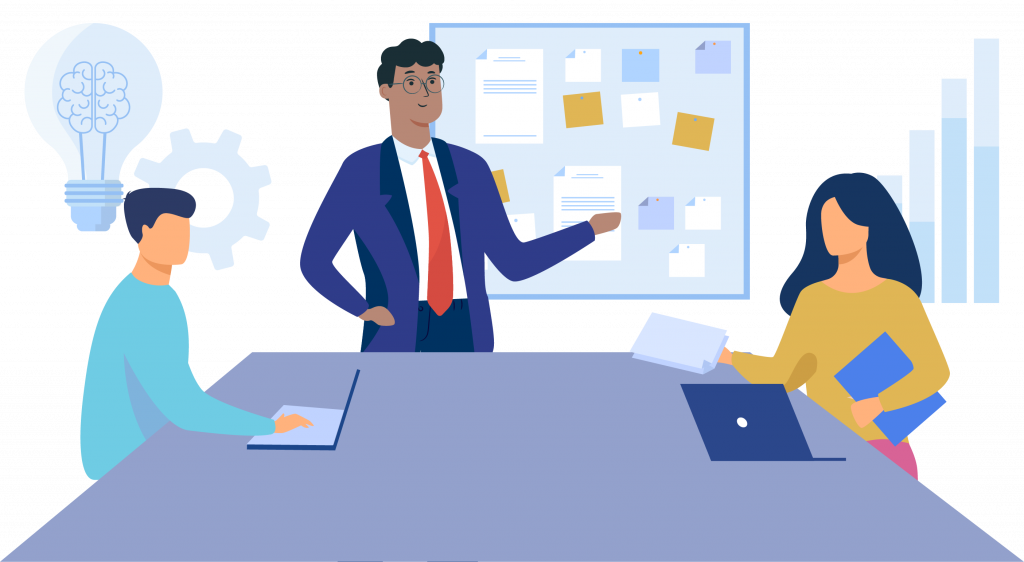
And by the way, sophisticated organizations will not penalize occasional bad decisions if they were data-driven. It takes courage to establish a fail-fast-and-learn-fast mentality. But you want everybody in the organization to make the best possible judgment calls considering all of the relevant known factors – that’s where the AI system can add a lot of confidence and save a lot of time.
Q. Courage and trust seem to be the themes that have guided this conversation today. Courage to change decision processes and trust that AI can truly be a difference maker. Just to be clear, how is that different from taking a leap of faith?
Michaud: No one should be looking for blind trust when the stakes are this high. We are looking for courage. We are looking for resolve, a determination to stay fiercely competitive and adopt new methods that will position the enterprise and its people to be more successful over time. Those are good things that I associate with winners in this business.
A degree of urgency is a good thing too. You know there can be a tendency in retail to kick the can down the road when it comes to new technology. There are plenty of excuses, like waiting for the economy to improve first. If you wait for that to happen, you’ll likely be too busy then to focus on innovation.
It’s never going to get easier. So winners will want to bite the bullet now. Get the AI systems in place. Get cultural change underway. Gain experience with the new decision process so you know you can trust it. You become more deliberate and more data-driven in your decision making. You become more agile, so you can operate faster and better as time goes on.
About Hypersonix
Hypersonix offers the most comprehensive cloud-based, Enterprise AI platform that enables consumer commerce decision-makers to make smart decisions fast—empowering them to get real-time intelligence, actionable insights and recommendations to take timely actions leading to business success.
Hypersonix’s diagnostic, predictive, and prescriptive analytics can measure and monitor business results, clarify why results are occurring, and recommend actions to drive improvements. Leveraging innovations in Machine Learning (ML), Natural Language Programming (NLP), and real-time data computing, the platform offers a simple, fast “Google-like” experience supported by “Jarvix,” a virtual assistant.
Designed for Retail, Restaurant, Hospitality, e-Commerce, Consumer Packaged Goods (CPG), and Brand Manufacturers, Hypersonix helps several leading brands and clients today to drive profitable growth, save money and improve customer engagement.
✎ by Todd P. Michaud, President & Chief Customer Officer at Hypersonix, Inc.

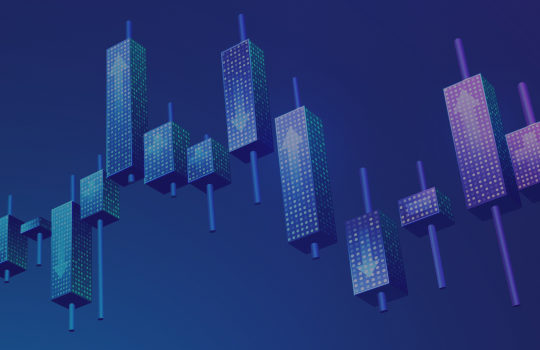
.png)
.png)


